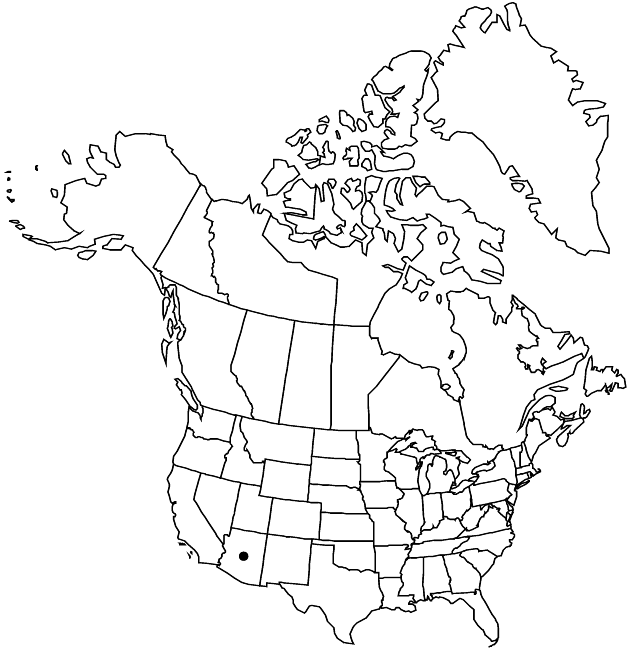Lorandersonia salicina
Sida 21: 1624. 2005.
Subshrubs 30–60 cm. Stems single (erect to ascending), green when young, woody portions tan becoming gray, highly branched (leafy branches possibly annual, arising from basal, woody branches), gland-dotted (in deep, resin-filled pits). Leaves erect to spreading, becoming deflexed, more widely spaced and ± reduced distally; blades with midnerves plus 2 fainter collateral nerves evident, linear to narrowly elliptic, 35–60 × 1.5–3 mm, flat, apices attenuate, faces glabrous, densely gland-dotted (in deep, circular, resin-filled pits). Heads in racemiform arrays or clustered at branch tips, forming highly branched corymbiform arrays 0.5–10 cm wide. Involucres hemispheric, 4–5 × 2.5–4 mm. Phyllaries 28–34 in 4–6 series, mostly whitish tan, midnerves mostly obscure, outer ± thickened distally, convex, ovate or oblong to spatulate, 0.5–4 × 0.8–1.2 mm, unequal, chartaceous, margins broadly scarious, entire or ± fimbriate, stipitate-glandular, apices rounded-obtuse, faces glabrous. Receptacles usually with 3–5 scales 0–1 mm. Ray-florets 0. Disc-florets 8–14; corollas 3.5–4.2 mm, glabrous, lobes 1.2–1.7 mm; style-branches exserted, 1.7–2 mm, appendages attenuate, 0.7–0.9 mm. Cypselae tan, oblong, 2–3 mm, 4–6 ribbed, faces moderately hairy; pappi whitish (fine, ± flattened, barbellate), 2–3 mm.
Phenology: Flowering fall.
Habitat: Rocky soils, cliff faces
Elevation: 300–1000 m
Discussion
Lorandersonia salicina is sometimes treated as a variety of Hesperodoria scopulorum or as a distinct, atypical species in that genus (G. L. Nesom 1991f). Phylogenetic analyses (R. P. Roberts and L. E. Urbatsch 2004) relate this taxon to the current genus.
Selected References
None.
Lower Taxa
"fine" is not a number.
